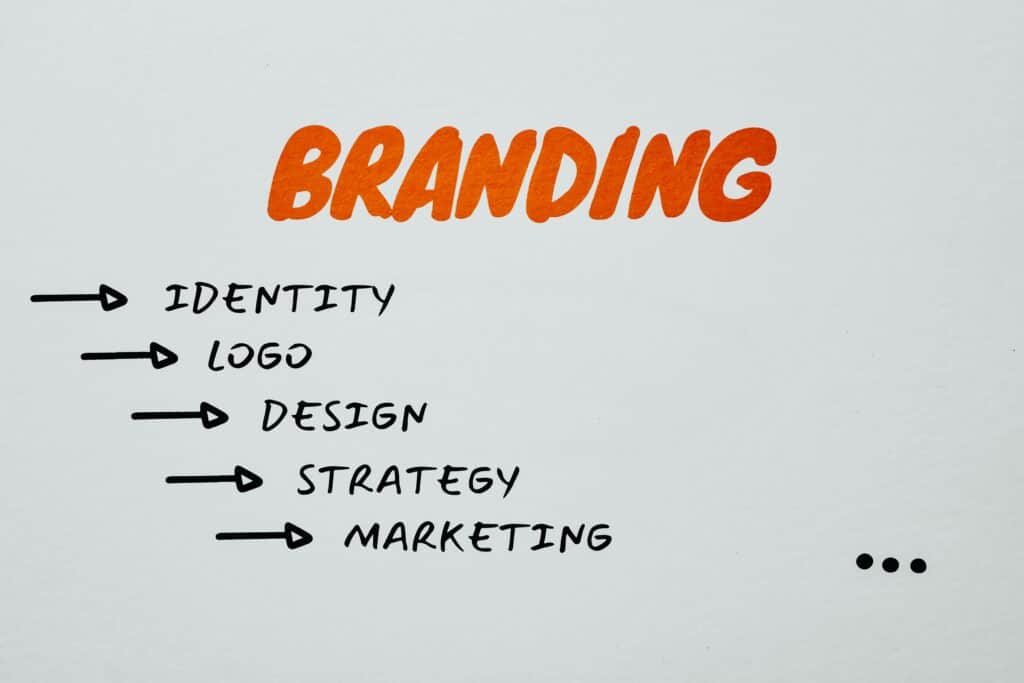The e-commerce world is fierce, and customer expectations are high. That means having a well-designed website isn’t just an advantage—it’s a necessity. At Full Stack Industries, we understand the transformative power of exceptional website design. We’ve witnessed firsthand how a strategically crafted online store can elevate brands, drive conversions, and foster lasting customer loyalty.
Today, we’ll delve into the essential elements of e-commerce design, sharing actionable tips, insights on common pitfalls to avoid, and a glimpse into the future trends that could reshape the industry. Whether you’re a seasoned e-commerce entrepreneur or just starting your online journey, these insights will empower you to create a digital storefront that captivates visitors and drives tangible business results.

The Golden Rule of E-commerce
If there were a single guiding principle to etch into the heart of every e-commerce endeavour, it would be this: prioritising the customer’s journey to deliver a seamless and intuitive user experience that drives conversions.
This statement encapsulates the essence of successful e-commerce design – a constant focus on the customer. In the digital world, where clicks and scrolls replace physical interactions, user experience becomes the cornerstone of engagement and sales.
A customer-centric approach in e-commerce design means viewing your online store through the eyes of your customers. It’s about anticipating their needs, removing friction from their path, and creating an enjoyable and efficient experience. This philosophy needs to permeate every stage of the customer journey.
From the moment potential customers land on your homepage, they should be able to navigate your site intuitively, effortlessly find the products they’re looking for, and seamlessly complete their journey. A confusing layout, slow loading times, or a cumbersome checkout process can all lead to frustration and cart abandonment.
Companies that prioritise user experience understand this. Think of Amazon’s one-click ordering, which streamlines the checkout process, or the intuitive product filtering and sorting options on ASOS, allowing customers to find what they’re looking for quickly. These design choices put the customer first and pay off through increased conversions and customer loyalty.
Enhancing User Experience: The Building Blocks of E-commerce Success
Another recommendation is to implement responsive design for a consistent experience across devices. Simplify navigation to help users find products quickly. Ensure fast load times for better engagement and lower bounce rates while incorporating high-quality visuals and clear calls to action. Don’t forget to integrate a smooth checkout process to reduce cart abandonment.
Let’s break down each aspect and explore how to implement them effectively:
1. Responsive Design
Your e-commerce site must look and function flawlessly on everything from a large desktop monitor to a smartphone screen. Responsive design ensures that your website automatically adapts to the screen size it’s being viewed on, providing a consistent and user-friendly experience across all devices.
2. Simplified Navigation
Imagine entering a store where the aisles are unorganised, and the products are carelessly placed. You’d likely leave frustrated and empty-handed. The same principle applies to e-commerce. A clear and intuitive navigation structure helps users find what they’re looking for quickly and easily, reducing bounce rates and increasing the likelihood of a purchase.
3. Fast Load Times
In the age of instant gratification, no one wants to wait for a slow website to load. For reference, Google recommends that sites have their Largest Contentful Paint load in 2.5 seconds or less. Optimising your website’s performance is crucial for keeping visitors engaged and reducing bounce rates.
4. High-Quality Visuals and Clear Calls-to-Action
Humans are visual creatures, and high-quality images and videos can significantly enhance the appeal of your products. Coupled with clear and compelling calls-to-action, such as “Add to Cart” or “Shop Now” buttons, you can guide users towards the desired action, boosting conversions.
5. Smooth Checkout Process
The checkout process is the final hurdle between a potential customer and a sale. A complicated or confusing checkout process can lead to cart abandonment, where users leave your site without completing their purchase.
Streamlining the checkout process, minimising the number of steps, and offering multiple payment options can significantly improve checkout probability.
Examples of Excellence:
Here are a few brands that we think excel in these areas:
- Apple: Renowned for its sleek and minimalist design, Apple’s website offers a seamless user experience with intuitive navigation and stunning product visuals.
- ASOS: This online fashion retailer has mastered mobile optimisation, offering a smooth and engaging experience on smartphones and tablets.
- Made.com: This furniture retailer uses high-quality images and interactive tools to showcase its products in real-world settings, helping customers visualise how they would look in their homes. Not to mention that their brand name is also their exact URL!
By focusing on these critical aspects of user experience and drawing inspiration from successful brands, you can create an e-commerce website that attracts visitors and converts them into loyal customers.
Common Mistakes in E-commerce Design: Navigating the Pitfalls
Even with the best intentions, businesses often fall prey to common design mistakes that can hinder their e-commerce success.
When asked about this, Full Stack Industries founder Sam said: “Too many distractions on a website can drown out the main message and frustrate shoppers – it’s always best to keep it simple. Don’t forget to make the website as good on mobile as on desktop, too. Also, an outdated site can feel untrustworthy to new customers. Your website is a living thing – keep it fresh, keep it relevant, and watch it thrive.”
So how do you avoid these mistakes? Let’s explore them further:
1. Information Overload
Some businesses cram their websites with excessive features, pop-ups, and flashy animations in an attempt to impress visitors. This can create a cluttered and overwhelming experience, distracting users from the site’s core purpose: to find and purchase products. A cluttered website can lead to confusion, frustration, and, ultimately, lost sales.
Solution: Start with a minimalist design approach. Prioritise essential elements and remove any unnecessary distractions. Focus on creating a clean, uncluttered layout that guides users towards the desired actions.
2. Neglecting Mobile Optimisation
With a huge chunk of internet traffic coming from mobile devices, more attention must be paid to optimisation. A website that doesn’t function properly on smartphones and tablets will provide a poor user experience, leading to high bounce rates and missed opportunities.
Solution: Implement responsive design from the outset. Test your website thoroughly on various devices to ensure a seamless experience across all screen sizes.
3. Outdated Design and Content
An outdated and neglected website can give the impression that your business is out of touch, not at the front of the industry, and give the feeling that it has been forgotten about. Understandably, this can quickly erode trust and credibility, making visitors less likely to engage with your brand or purchase.
Solution: Regularly update your website’s design and content to keep it fresh and relevant. This shows you’re invested in your online presence and care about providing a positive user experience.
By being mindful of these common mistakes and taking proactive steps to avoid them, you can create an e-commerce website that looks great and delivers a seamless and enjoyable experience for your customers. This will lead to increased engagement, conversions, and long-term success.

Future E-commerce Trends: Embracing the Next Wave of Innovation
The e-commerce landscape constantly evolves, driven by technological advancements and shifting consumer expectations. Whether it’s AI-driven personalisation, the growth of voice-activated commerce, or augmented reality (AR), there is an endless range of exciting tech developments that are simultaneously in homes today and on the horizon. There has also been a steady rise in eco-conscious e-commerce, with more brands focusing on sustainability in design and delivery.
Once again, let’s delve deeper into each trend and its implications for the future of e-commerce:
1. AI-Driven Personalisation
Artificial intelligence is revolutionising e-commerce by enabling highly personalised shopping experiences. AI algorithms can analyse vast customer data to understand individual preferences, behaviours, and purchase history, allowing businesses to deliver tailored product recommendations, targeted promotions, and customised content. This level of personalisation enhances the customer experience, boosts engagement, and drives conversions.
Example: Amazon’s recommendation engine is a prime example of AI-driven personalisation, suggesting products based on past purchases and browsing behaviour. Similarly, Netflix uses AI to personalise movie and TV show recommendations for its users.
2. Voice Commerce
With the rise of smart speakers and voice assistants like Amazon Alexa and Google Assistant, voice commerce is gaining traction. Voice-activated shopping allows users to browse, search for products, and make purchases using only their voice, offering a convenient and hands-free shopping experience.
Example: Several major retailers, including Walmart and Target, have already integrated voice shopping capabilities into their platforms.
3. Augmented Reality (AR)
AR technology blurs the lines between the physical and digital worlds, allowing customers to “try before they buy” in their homes. This enhances the decision-making process, reduces returns, and increases customer satisfaction.
Example: IKEA’s AR app allows users to visualise how furniture would look in their own homes. Sephora’s Virtual Artist app lets customers try different makeup looks using their smartphone camera.
4. Eco-Conscious E-commerce
As consumers become increasingly aware of the environmental impact of their choices, sustainability is becoming a key consideration in e-commerce. Brands adopt eco-friendly practices in their design, packaging, and delivery processes to appeal to environmentally-conscious customers.
Example: Patagonia, a leader in sustainable outdoor apparel, uses recycled materials in its products and actively promotes environmental initiatives.
Preparing for the Future:
To stay ahead of the curve, businesses should embrace these emerging trends:
- Invest in AI technologies to enable personalisation and data-driven decision-making
- Optimise your website for voice search
- Explore the potential of AR to enhance product visualisation
- Adopt sustainable practices in your operations and communicate your commitment to the environment
Embracing these trends and adapting to the changing e-commerce landscape means businesses can position themselves for continued success in the years to come while remaining at the forefront of positive change.
Dispelling E-commerce Platform Misconceptions: Choosing the Right Fit
Choosing the right e-commerce platform is critical for any business, but misconceptions often cloud it. However, Sam (founder of Full Stack Industries) is keen to dispel some common misunderstandings: “Shopify is not just for small businesses; it also offers scalability and advanced features for enterprises. Magento, though powerful, is not too complex. With proper management, it can handle large and intricate e-commerce operations efficiently. Lastly, WooCommerce is not just for simple stores; it’s highly customisable and can support complex needs with the right extensions.”
Shopify:
- Misconception: Shopify is only suitable for small businesses.
- Reality: While Shopify is popular for startups and small businesses due to its ease of use and affordability, it also offers robust features and scalability to support growing enterprises. With its extensive app store and enterprise-level plans, Shopify can easily handle complex e-commerce operations.
Magento:
- Misconception: Magento needs to be simplified and easier to manage.
- Reality: Magento is a powerful and highly flexible platform ideal for large and complex e-commerce businesses. While it does require technical expertise to set up and manage, with the right team or agency in place, Magento can provide unparalleled control and customisation options.
WooCommerce:
- Misconception: WooCommerce is only for simple online stores.
- Reality: Built on WordPress, WooCommerce offers excellent flexibility and customisation. With its vast library of extensions and plugins, WooCommerce can be tailored to support various e-commerce needs, from small to large enterprises.
Choosing the Right Platform:
The best platform for your business depends on your specific needs and requirements. Consider factors such as:
- Size and complexity of your business
- Budget
- Technical expertise
- Desired level of customisation
- Scalability needs
Shopify might be a good fit for a small business looking for an easy-to-use, affordable solution. Magento could be the right choice for a large enterprise with complex needs. If you value flexibility and customisation, WooCommerce is the way to go.
Remember, there’s no one-size-fits-all answer. Researching and comparing different platforms and consulting an e-commerce expert is crucial to making an informed decision that aligns with your business goals.
Need some help choosing the right e-commerce platform? Just get in touch and we’ll be happy to help.
User-Centric Design: The Key to E-commerce Success
In the competitive world of e-commerce, where attention spans are fleeting and choices abound, a user-centric design is the key to unlocking sustainable growth.
Prioritising the needs and expectations of your customers at every touchpoint can create an online store that not only converts visitors into buyers but also fosters lasting relationships. Remember, your website is more than just a digital storefront; it reflects your brand and is a powerful tool for building trust and loyalty. Make it count.
If you’re ready to level up your e-commerce and website design game, click here. We can’t wait to get started.






